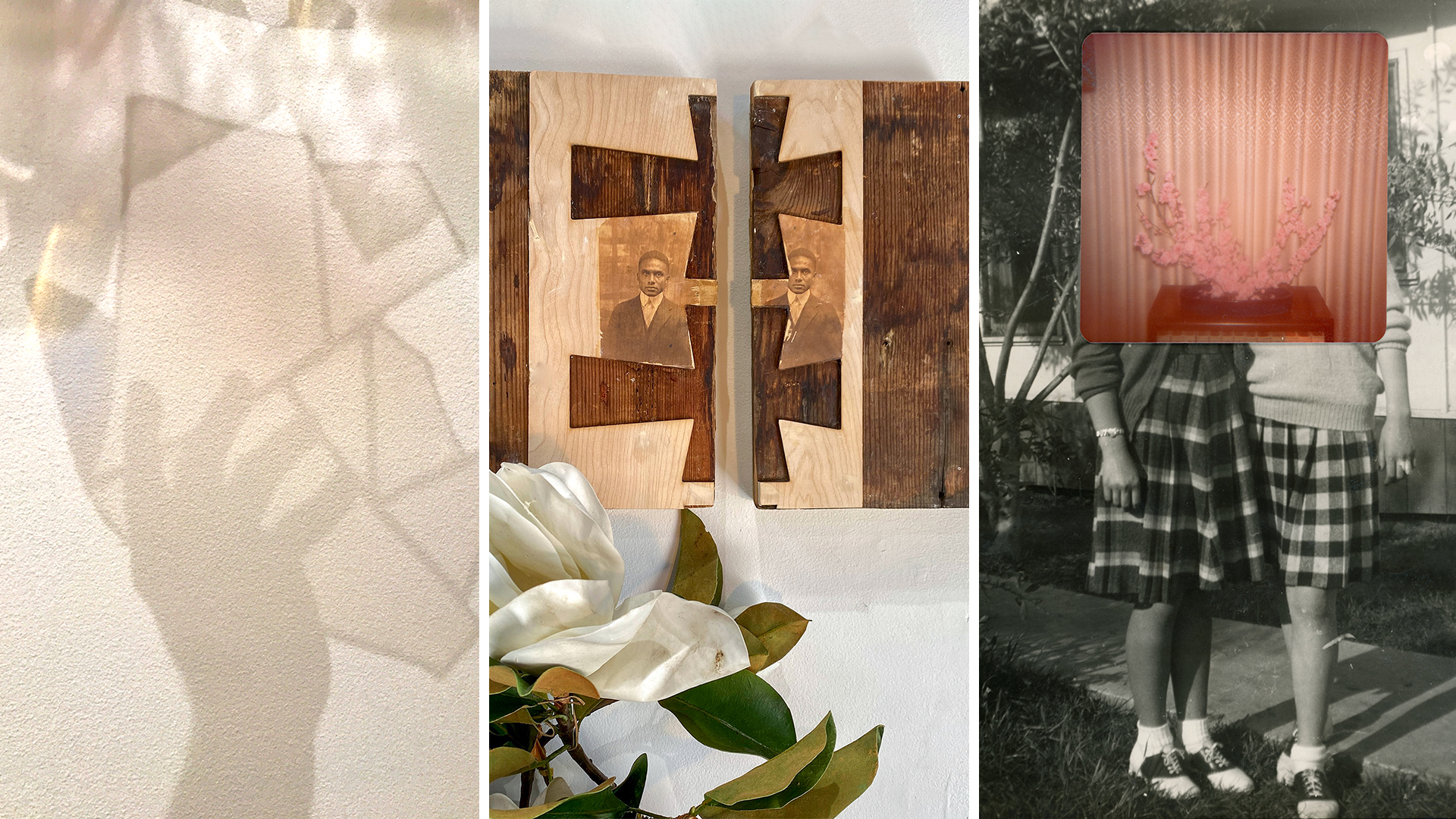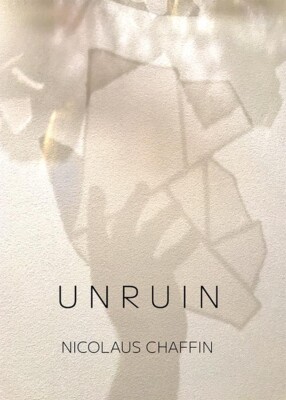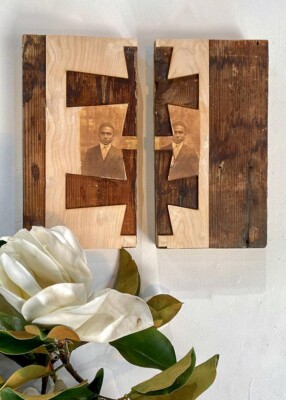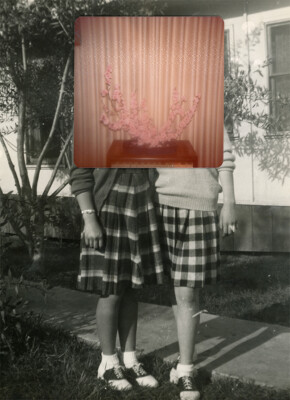
FOR IMMEDIATE RELEASE
The Artist in Residence Program at Recology San Francisco is thrilled to announce exhibition dates for current artists-in-residence Nicolaus Chaffin, Bryan Keith Thomas, and CCA MFA candidates Kelley Finley and Deena Qabazard.
Friday, May 17, 2024 from 5 – 8 PM with performance at 7 PM
Saturday, May 18, 2024 from 12 – 3 PM
Tuesday, May 21, 2024 from 5 – 7:30 PM with artist talk by Kelley Finley & Deena Qabazard at 6 PM (401 Tunnel), Bryan Keith Thomas at 6:30 PM (503 Tunnel), and Nicolaus Chaffin at 7 PM (503 Tunnel).
Admission is free and open to the public, no reservation required. All ages are welcome and the site is wheelchair accessible.
Location
Recology Art Studios
503 and 401 Tunnel Avenue, San Francisco
 Nicolaus Chaffin
Nicolaus Chaffin
UNRUINED
Written by Weston Teruya
In creating the sculptural installation UNRUIN, Nicolaus Chaffin has relieved utilitarian building materials of their functional tasks to draw out the intricacies of their textures, shapes, and subtle colors, so that they might breathe, stretch out, and sigh. When at work, these materials were ever present but tucked away in the unremarkable mundanity of the built environment, undergirding structures; receding into the background as surfaces for communication; and serving as lighting and reflective accents. Gathered from the ruins of construction and demolition, they are now liberated from their expected role of unremarkable service. Chaffin’s work fosters a refusal of expected function, eliding full visibility through cloaking, turning mirrored surfaces away, and cinching the opening of a sack to only allow a small peek at its contents.
Installed across the floor, chunks of concrete debris sink into the carefully softened and curved wood surfaces of wheeled cradles. The uneven surfaces of the rocky forms show evidence of their past use in a rusty edge of rebar and the impression of a wood post that once ran across a chunk. But here, in their fragmentation and upending, their heft is only asked to begin a slow rest against their contoured wood dollies.
Across the gallery walls and sweeping toward the ceiling, Chaffin suspends a series of semi-mirrored glass assemblages on nails. Instead of serving as surfaces for humans to behold themselves or look to the outside, he solders together fragmented glass pieces and balances them horizontally so that they bask in light that is reflected and diffused in newly consolidated compositions across the wall. In another series of works, Chaffin installs candles against large sheets of paper nearly the same color, emphasizing the soot drawings he has made across their surfaces. The trace of curling fumes from the candle’s light evidences the material process that has come to an end as the candles now remain unlit.
Placed within the gallery’s severe mash of cinderblock, bare plywood, and painted drywall, Chaffin’s sculptures in their varied states of rest invite closer observation of other materials at work, as they hold up the structure around us and serve as the frame for exhibition. The juxtaposition primes us to re-look at the textures, relationships, and potential energy embedded in the everyday.
Nicolaus Chaffin is a multidisciplinary artist who enlists materials and production methods that embrace wear, marred surfaces, stains, failure, and complete disruption through performative productions and actions. Concerned with examining strategies of queer visibility, labor, and communication, Chaffin’s practice honors the invisible labor of his queer forefolks – those who envisioned the utopic through centering experimentation as well as those who sought the future through the radical act of survival. Chaffin’s work has been shown in the Bay Area, Los Angeles, Maryland, New York, Boston, and abroad in London, Austria, and the Netherlands. He has attended residencies with Bemis Center for Contemporary Art and the Fire Island Artist Residency and exhibited with [2nd floor projects] in the Bay Area Now 7 Triennial.
 Bryan Keith Thomas
Bryan Keith Thomas
Patina
Written by Weston Teruya
Bryan Keith Thomas’s Patina is a maximalist space of ceremony–a site to welcome together ancestors. Throughout the gallery, Thomas creates a dialogue between richly layered artworks and an array of gathered materials–items of power that speak to their past owners and contexts. Each constituent element brings with it connections to people who may not be visible in the space, but who Thomas channels in the process of crafting of these artworks, giving the space a human presence.
We grant certain belongings value because they speak to our history. These heirlooms–from old jewelry and ornate textiles to sports equipment, prize ribbons, and ceremonial regalia–attest to our having been in the world even after we are gone. They resonate with evidence of their past or intended future use, of the hands that held them, of the care with which they were crafted. Those traces of time, life, and exchange are the patina that Thomas places at the center of his artwork. Rather than polishing it away, he honors the accrued relational record in the materials–fingerprints on an oxidized metal surface, worn paint and irregularities on a cut piece of lumber, the wear of years of footsteps across a rug. He channels a spiritual and material sensitivity to seek materials that have similar presence and places them in relationship with one another. Textures and symbols find kinship with their echoes in dynamic patterns. Bundles of material that Thomas calls heirloom bags–containing fabric from clothing, childhood ornamentation, loved items, tea bags–are infused with a talismanic energy that tell stories about ritual, nourishment, cultural histories, and communities–both real and speculative. These are eggs of potential waiting to hatch. The resulting collection invites us to enter into relationship with the artist, his work, and the stories and ancestors who occupy the space with us.
Bryan Keith Thomas was born in Dyersburg, Tennessee and he received his Master of Fine Arts Degree from the University of Tennessee, Knoxville. Thomas has been exhibited locally, nationally, and internationally at Art Basel (Miami, Fl), de Young Museum (San Francisco, CA); the Oakland Museum of California (Oakland, CA); Gallery Guichard (Chicago, IL); ArtJaz Gallery (Philadelphia, PA); E&S Gallery (Louisville, KY) the American Embassy ( Dakar, Senegal); Du Sable Museum ( Chicago, IL) among others. He currently resides in Oakland, California, where he works as a Professor of Fine Art within the Painting & Drawing and Critical Ethnic Studies departments at California College of the Arts.
 Kelley Finley & Deena Qabazard
Kelley Finley & Deena Qabazard
guide my hands, so i can see you
Written by Weston Teruya
In guide my hands, so i can see you, Kelley Finley and Deena Qabazard weave together installation, performance, and a publication to give form to their artistic relationship and negotiation with the materials they sourced from the Public Reuse & Recycling Area. Close collaborative work requires deep intimacy and trust because of the vulnerability in the creative process. It is both a professional risk and the hope of imagining new models for living with one another. Over the course of the residency, Finley and Qabazard developed tools for empathetic exchange, not just in verbal conversation or watching one another, but practicing a language of non-visual observation, touch, guidance, and movement. This embodied communication serves as the base for their performance choreography, sculptural process, and conceptual frame.
Both artists share an interest in the power of visual representation, fragmentation, and obfuscation that manifests in the performance and their handling of found photographic and sculptural materials. Their work together utilizes screens, barriers, and collaged and pinned cut outs that mask images and hide the identities of photographed figures. Finley and Qabazard anchor the exhibition with an assembled sculptural barrier punctured with a series of slits and apertures. During the performance, the two artists will be situated on either side of the sculpture, obscured from one another while they remove, exchange, and don wearable sculptures, passed through the openings in the set. Even outside of its activation, the object acts as an in-between presence that stands in for the spaces between individual people and the multiplicity of intersecting identities within each of us. Given physical form, it is simultaneously a thing to be transgressed and a generative element in itself; a wall and a bridge; a distance and a space for storytelling. Through this sustained connection and strategic refusal, they make room for shared joy. Communal resistance is a space for trust and deep empathy.
Finley and Qabazard’s performance, adorning our barriers, will take place in the gallery on Friday evening at 7 PM. Their publication will be available for purchase throughout the course of the exhibition.
Kelley Finley is an interdisciplinary artist who primarily works in sculpture, textiles, and performance. She uses labor, talismans, rituals, and locations to both examine and archive the experiences of mixed identity, immigration, racial melancholy, and the female Asian diaspora. Finley’s work has been shown locally and internationally, notably at ICA San Francisco, Bass & Reiner (SF), Room Contemporary (Venice, Italy), and La Fenice Gallery (Hong Kong). She received her BFA in Sculpture and BS in Art Education from Kutztown University. Finley is a current MFA candidate at California College of the Arts.
Deena Qabazard is a Kuwaiti American interdisciplinary artist. She blends photography, textiles, and dance in installations that experiment with the nature of the body, breath, and mortality. Her experience living alternately between California and Kuwait imbues her work with a strange familiarity, accentuating her hyphenated identity, and evoking the body in motion across shifting landscapes. Qabazard’s work has been shown in the U.S. and the Middle East, and she is currently an MFA candidate at California College of the Arts.
About the Artist in Residence Program
The Recology San Francisco Artist in Residence (AIR) Program is an art and education initiative that awards Bay Area artists access to discarded materials, an unrestricted stipend, and an individual studio space. These resources, along with comprehensive support, are provided to artists while they create a body of work and host studio visits during their four-month residency at the San Francisco Transfer Station.
Since 1990, over 150 professional artists and 50 student artists from local universities and colleges have completed residencies. Selected artists have worked across disciplines—including new media, video, painting, photography, performance, sculpture, and installation—to explore a wide range of topics.
The Recology AIR Program encourages the conservation of natural resources by providing artists with time, space, and reusable resources to create a new and impactful body of work. The Program further aims to create a more diverse and inclusive residency that amplifies perspectives from Bay Area communities and inspires children and adults who engage with the program to re-imagine their role in creating a just and sustainable world.